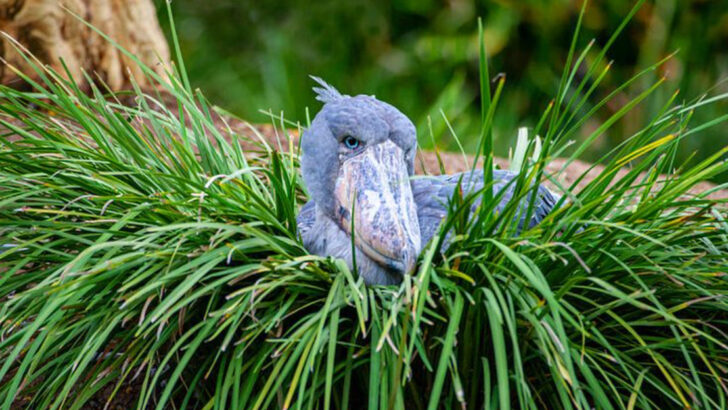The shoebill stork looks like it escaped from Jurassic Park—and forgot to blend in.
With a face only a paleontologist could love and a beak shaped like a battle-worn shoe, this bird doesn’t chirp—it claps its bill like a shotgun. Loud. Sudden. Terrifying. And yes, real.
It can stare you down without blinking. It hunts like a cold-blooded assassin. And when it moves… it’s slow, steady, and 100% menacing.
This isn’t your average birdwatching trip. This is nature’s weirdest mashup of bird, dinosaur, and something straight out of a fever dream. Ready to meet the feathered freak that owns the swamps? Let’s get into it.
The Shoebill’s Unusual Beak

Imagine a bird with a beak that resembles a Dutch clog, yet it’s nature’s ingenious tool. The Shoebill’s massive bill, measuring over 9 inches, is perfect for catching prey. With its sharp edges and hook at the tip, it snaps shut like a bear trap, a mechanism that resonates like gunfire in the stillness of the swamp. It’s not just for show; the Shoebill uses this mighty beak to scoop up fish, snails, and even small crocodiles. Its functionality is as remarkable as its formidable appearance.
A Mesmerizing Gaze
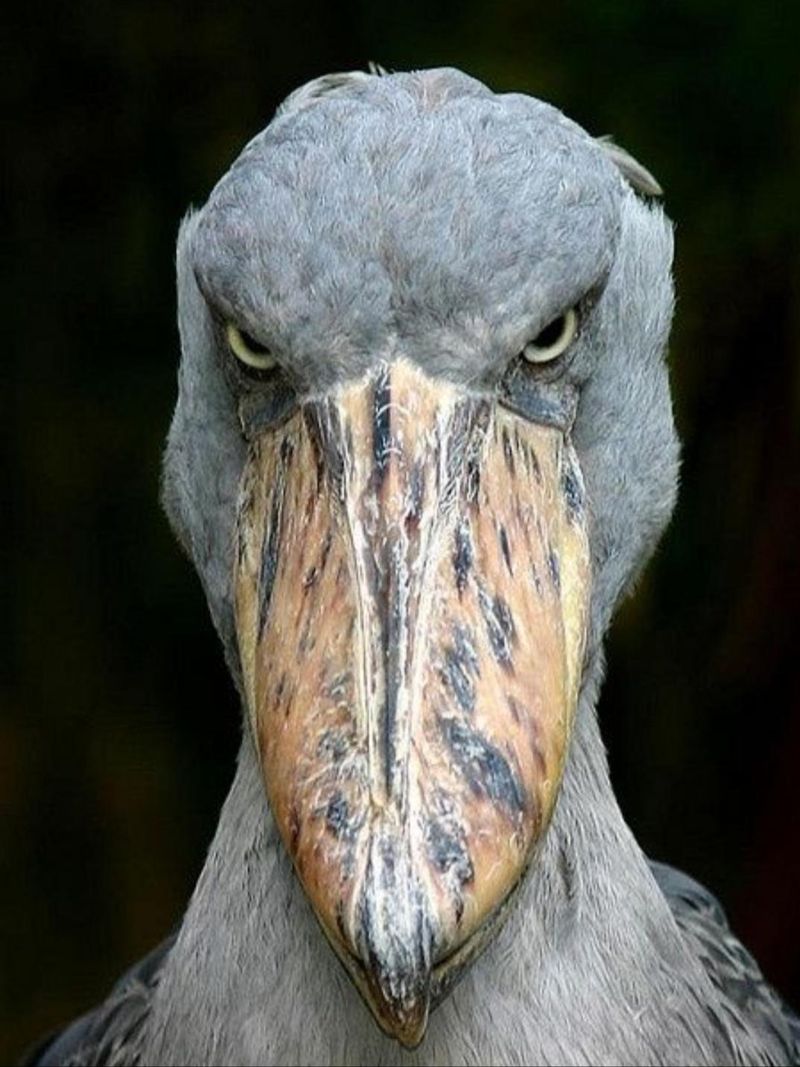
There’s something mysterious about the Shoebill’s gaze, with eyes that seem to peer into your soul. These large, expressive eyes are excellent for spotting prey, especially in the dim, swampy waters where they hunt. However, it’s not just about function; their gaze is almost mythical, adding to their reputation as living relics of the dinosaur age. Observers often describe these eyes as both captivating and slightly intimidating, an essential feature of the Shoebill’s intriguing personality.
Silent Hunters
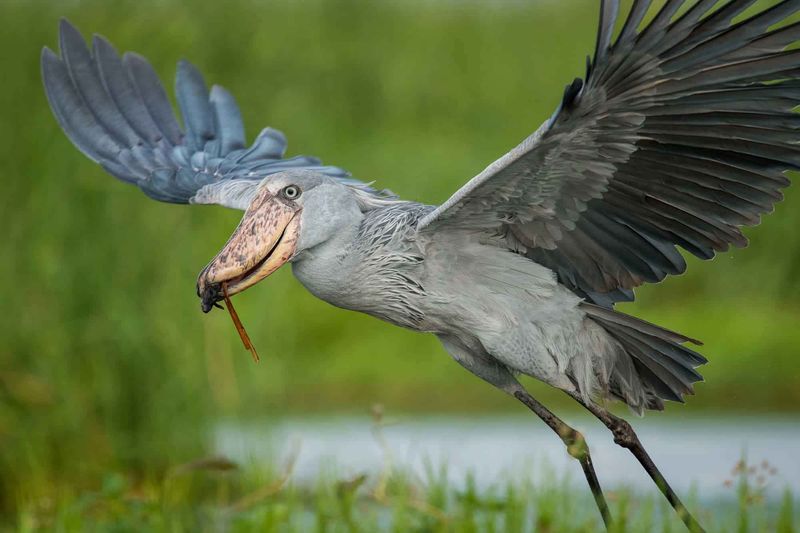
Renowned for their stealth, Shoebills are the ninjas of the avian world. Their hunting method is a study in patience and precision. Standing completely still for hours, they become one with their environment. When the moment is right, they strike with lightning speed, securing their meal. This ability to blend seamlessly into the swampy backdrop makes them formidable predators, despite their ungainly look. It’s a dance of patience and power, where silence is the key to survival.
The Dinosaur Connection
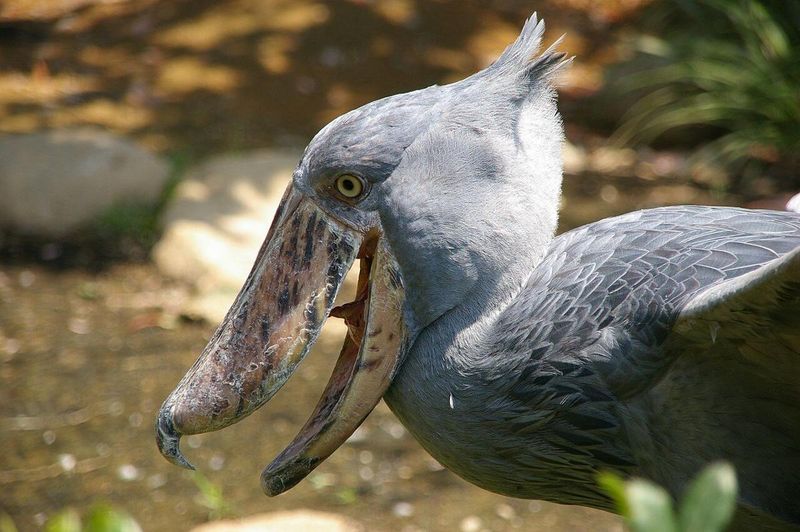
Their prehistoric appearance isn’t just superficial. Shoebills share a lineage with dinosaurs, evident in their reptilian-like feet and massive, heavy bodies. This connection is more than skin deep; it’s a window into evolution. Their presence in the swamps is a living testament to the ancient world, a remarkable bridge from the past to the present. They are indeed a marvel of evolutionary persistence, maintaining traits from their ancient ancestors in today’s world.
Socially Distant
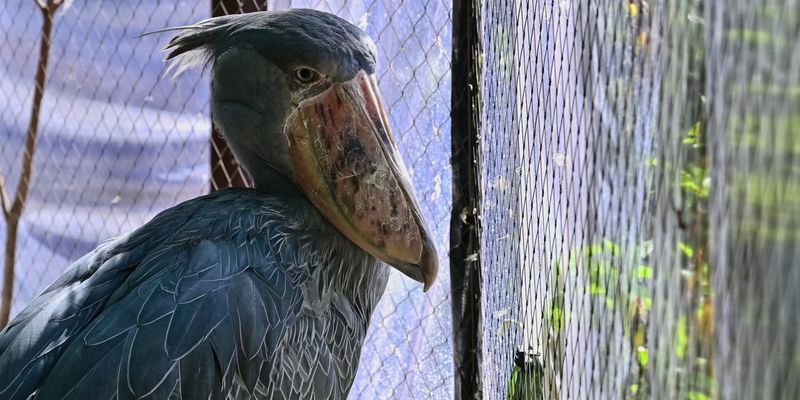
Shoebills are the introverts of the bird kingdom, preferring the company of themselves over others. They enjoy solitude, often found alone in their swampy homes, unlike many other birds that flock together. This solitary nature isn’t from lack of social skills but rather an adaptation to their hunting technique. By staying alone, they reduce competition for food, ensuring survival. It’s a lifestyle choice that suits their needs perfectly, making them unique among their feathered peers.
The Beak Clapping Phenomenon

One of the most distinctive sounds in the wetlands is the Shoebill’s beak clapping. This loud, gunshot-like noise is not just for show but a vital communication tool. It announces territory, signals distress, or even shows courtship interest. The rapid snapping of their powerful beak demonstrates not only their strength but also their intelligence in using sound to communicate. It’s a fascinating behavior that sets them apart and contributes to their mystique.
Nesting in Seclusion
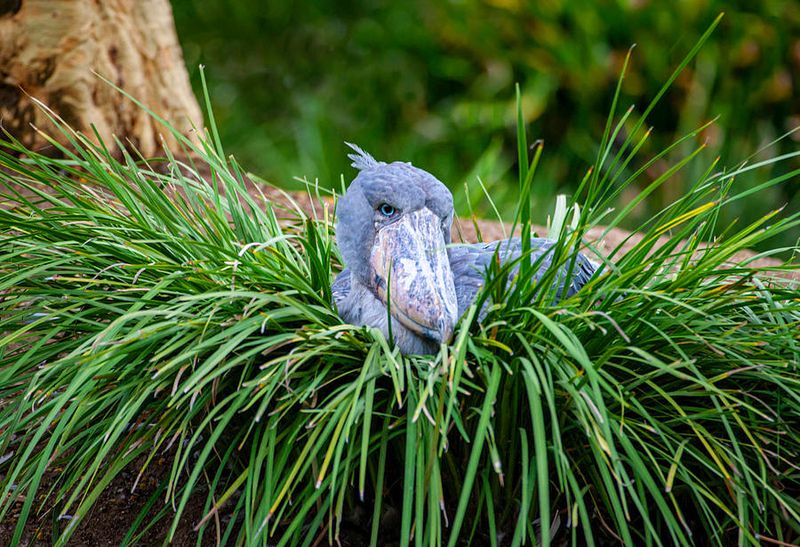
Shoebills build their nests in seclusion, preferring dense vegetation away from prying eyes. These nests, constructed atop floating vegetation, are cleverly designed to remain hidden from predators. The parents are devoted caretakers, often seen turning eggs to ensure even temperature and offering protection from the harsh sun. This secluded nesting strategy ensures that their young have the best start in life, in a safe and concealed environment, away from potential threats.
The Slow Walk
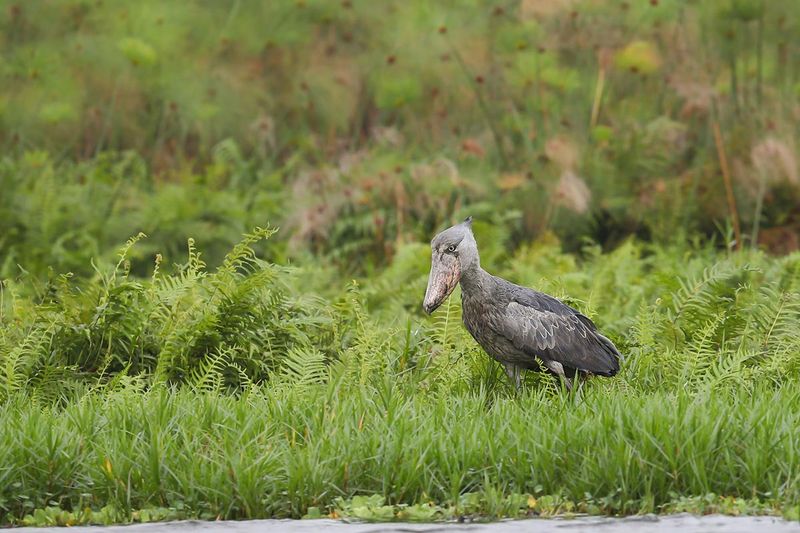
Observe a Shoebill as it walks, and you’ll notice its deliberate, almost meditative pace. This slow walk is a hunting strategy, allowing them to move without disturbing the water, keeping prey unaware of their approach. Every step is calculated, a blend of caution and creedence to their nature as ultimate hunters. This methodical movement, though seemingly slow, is a powerful demonstration of their adaptability and mastery over their environment.
A Rare Sight

Spotting a Shoebill is like finding a hidden treasure, as they are elusive and rare. Their natural habitat in the swamps of central Africa is remote and difficult to access, adding to their mystery. Bird watchers from around the world travel great distances for just a glimpse of this enigmatic bird. Their rarity adds to their allure, making them a prized sight for those fortunate enough to encounter them in the wild, a memory to cherish.
Their Unmistakable Call
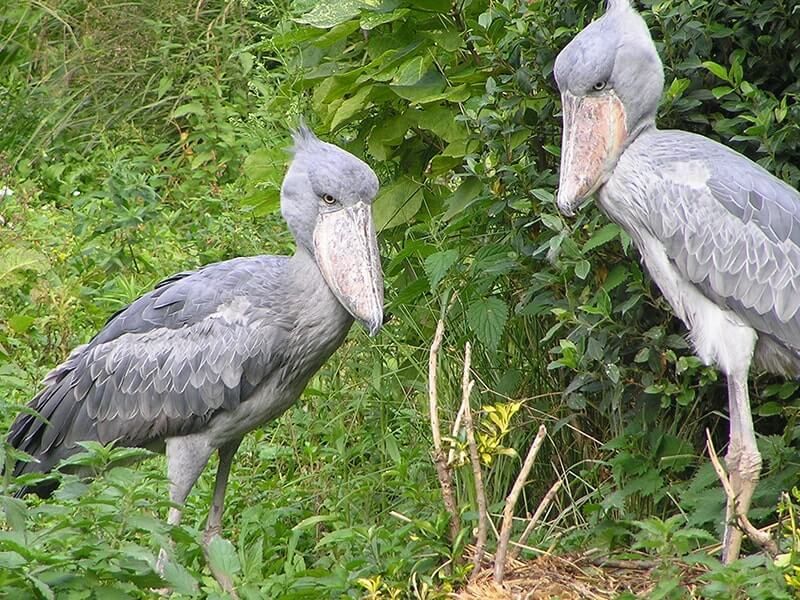
While the Shoebill’s beak clapping is famous, their vocal call is equally fascinating. This deep, guttural sound is reminiscent of a monk chanting, resonating through the wetlands. It’s a sound that echoes their ancient lineage, an eerie yet beautiful reminder of their place in the avian world. It’s not just a call; it’s an experience, a sound that connects listeners to something primordial and timeless.
Masters of Camouflage
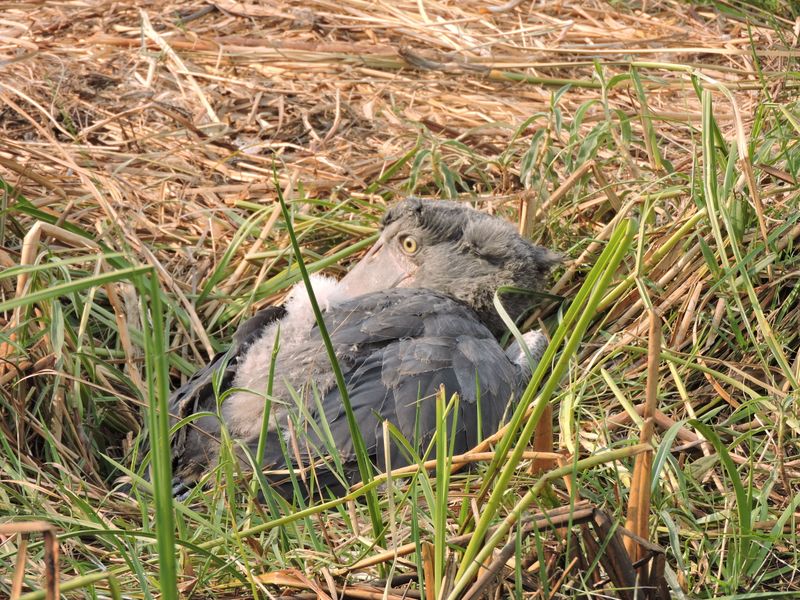
Nature has gifted the Shoebill with remarkable camouflage, allowing them to blend seamlessly into the marshy landscapes. Their muted gray feathers match the swamp’s shadows, providing perfect concealment from both prey and potential threats. This natural disguise is crucial for their survival, making them one of the most efficient hunters in their habitat. It’s an exquisite showcase of nature’s artistry, where form meets function in perfect harmony.
Their Majestic Flight

Though they appear ungainly on land, in flight, Shoebills are a sight to behold. With wingspans reaching up to 8 feet, they glide gracefully across the sky. Their slow, deliberate wingbeats create an elegant silhouette against the African sky, a testament to their majestic nature. Watching them soar, one can’t help but be reminded of their ancient heritage, a bridge between the earthbound and the ethereal.
The Guardians of the Swamp

In their swampy domain, Shoebills are the guardians, maintaining an ecological balance. Their presence deters overpopulation of certain fish and aquatic creatures, ensuring harmony in their habitat. This ecological role highlights their importance beyond mere survival. They are stewards of their environment, playing a crucial part in the delicate dance of the wetland ecosystem. Shoebills remind us of the interconnectedness of life, where each creature has a role to play.

